The Chalcolithic was an archaeological period characterized by the increasing use of smelted copper. It followed the Neolithic and preceded the Bronze Age. It occurred at different periods in different areas, but was absent in some parts of the world, such as Russia, where there was no well-defined Copper Age between the Stone and Bronze Ages. Stone tools were still predominantly used during this period.

America's Stonehenge is a privately owned tourist attraction and archaeological site consisting of a number of large rocks and stone structures scattered around roughly 30 acres within the town of Salem, New Hampshire, in the United States. It is open to the public for a fee as part of a recreational area which includes snowshoe trails and an alpaca farm.

In the History of Mesoamerica, the stage known as the Paleo-Indian period is the era in the scheme of Mesoamerican chronology which begins with the very first indications of human habitation within the Mesoamerican region, and continues until the general onset of the development of agriculture and other proto-civilisation traits. The conclusion of this stage may be assigned to approximately 9000 BP, and the transition to the succeeding Archaic period is not a well-defined one.
Pseudoarchaeology consists of attempts to study, interpret, or teach about the subject-matter of archaeology while rejecting, ignoring, or misunderstanding the accepted data-gathering and analytical methods of the discipline. These pseudoscientific interpretations involve the use of artifacts, sites or materials to construct scientifically insubstantial theories to strengthen the pseudoarchaeologists' claims. Methods include exaggeration of evidence, dramatic or romanticized conclusions, use of fallacious arguments, and fabrication of evidence.
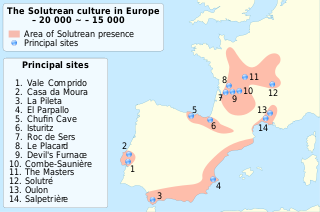
The Solutrean industry is a relatively advanced flint tool-making style of the Upper Paleolithic of the Final Gravettian, from around 22,000 to 17,000 BP. Solutrean sites have been found in modern-day France, Spain and Portugal.
Howard Barraclough Fell, better known as Barry Fell, was a professor of invertebrate zoology at the Harvard Museum of Comparative Zoology. While his primary professional research included starfish and sea urchins, Fell is best known for his pseudoarchaeological work in New World epigraphy, arguing that various inscriptions in the Americas are best explained by extensive pre-Columbian contact with Old World civilizations. His writings on epigraphy and archaeology are generally rejected by those mainstream scholars who have considered them.

Paleo-Indians were the first peoples who entered and subsequently inhabited the Americas towards the end of the Late Pleistocene period. The prefix paleo- comes from the Ancient Greek adjective: παλαιός, romanized: palaiós, lit. 'old; ancient'. The term Paleo-Indians applies specifically to the lithic period in the Western Hemisphere and is distinct from the term Paleolithic.
The Calico Early Man Site is an archaeological site in an ancient Pleistocene lake located near Barstow in San Bernardino County in the central Mojave Desert of Southern California. This site is on and in late middle-Pleistocene fanglomerates known variously as the Calico Hills, the Yermo Hills, or the Yermo formation. Holocene evidence includes petroglyphs and trail segments that are probably related to outcrops of local high-quality siliceous rock.
The Paleo-Arctic Tradition is the name given by archaeologists to the cultural tradition of the earliest well-documented human occupants of the North American Arctic, which date from the period 8000–5000 BC. The tradition covers Alaska, and expands far into the east, west, and the Southwest Yukon Territory of Canada.

Gungywamp is an archaeological site in Groton, Connecticut, United States, consisting of artifacts dating from 2000-770 BC, a stone circle, and the remains of both Native American and colonial structures. Besides containing the remains of houses and storage structure, the Gungywamp site has a double circle of stones near its center, just north of two stone chambers. Two concentric circles of large quarried stones – 21 large slabs laid end to end – are at the center of the site.

The Solutrean hypothesis on the peopling of the Americas is the claim that the earliest human migration to the Americas began from Europe during the Solutrean Period, with Europeans traveling along pack ice in the Atlantic Ocean. This hypothesis contrasts with the mainstream academic narrative that the Americas were populated first by people crossing the Bering Strait to Alaska by foot on what was land during the Last Glacial Period or by following the Pacific coastline from Asia to America by boat.
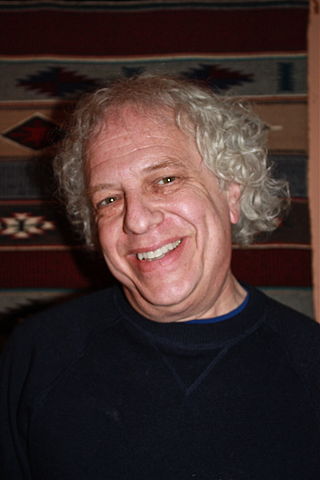
Kenneth L. "Kenny" Feder is an emeritus professor of archaeology at Central Connecticut State University and the author of several books on archaeology and criticism of pseudoarchaeology such as Frauds, Myths, and Mysteries: Science and Pseudoscience in Archaeology. His book Encyclopedia of Dubious Archaeology: From Atlantis to the Walam Olum was published in 2010. His book Ancient America: Fifty Archaeological Sites to See for Yourself was published in 2017. He is the founder and director of the Farmington River Archaeological Project.
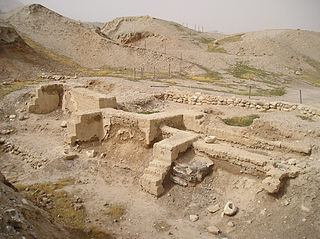
Levantine archaeology is the archaeological study of the Levant. It is also known as Syro-Palestinian archaeology or Palestinian archaeology. Besides its importance to the discipline of Biblical archaeology, the Levant is highly important when forming an understanding of the history of the earliest peoples of the Stone Age.

Forbidden Archeology: The Hidden History of the Human Race is a 1993 pseudoarchaeological book by Michael A. Cremo and Richard L. Thompson, written in association with the Bhaktivedanta Institute of ISKCON. Cremo states that the book has "over 900 pages of well-documented evidence suggesting that modern man did not evolve from ape man, but instead has co-existed with apes for millions of years!", and that the scientific establishment has suppressed the fossil evidence of extreme human antiquity. Cremo identifies as a "Vedic archeologist", since he believes his findings support the story of humanity described in the Vedas. He says a knowledge filter is the cause of the supposed suppression.
Colha, Belize is a Maya archaeological site located in northern portion of the country, about 52 km. north of Belize City, near the town of Orange Walk. The site is one of the earliest in the Maya region and remains important to the archaeological record of the Maya culture well into the Postclassic Period. According to Palma Buttles, “Archaeological evidence from Colha allows for the interpretation occupation from the Early Preceramic (3400-1900B.C.) to Middle Postclassic with population peaks occurring in the Late Preclassic and again in the Late Classic ”. These peaks in population are directly related to the presence of stone tool workshops at the site. Colha's proximity to an important source of high quality chert that is found in the Cenozoic limestone of the region and well traveled trade routes was utilized by the inhabitants to develop a niche in the Maya trade market that may have extended to the Greater Antilles. During the Late Preclassic and Late Classic periods, Colha served as a primary supplier of worked stone tools for the region. It has been estimated that the 36 workshops at Colha produced nearly 4 million chert and obsidian tools and eccentrics that were dispersed throughout Mesoamerica during the Maya era. This made it an important player in the trade of essential good throughout the area.
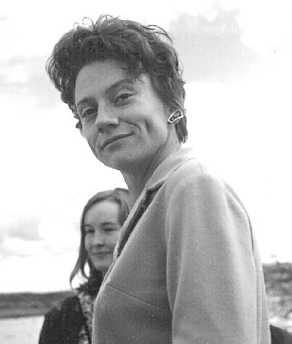
Cynthia Irwin-Williams was an archaeologist of the prehistoric American Southwest. She received a B.A. in Anthropology from Radcliffe College in 1957; the next year she received a M.A. in the same field. In 1963 she completed her educational career in Anthropology with a PhD. from Harvard University. Beginning her career in the 1950s, Irwin-Williams was considered a groundbreaker for women in archaeology, like her friend and supporter Hannah Marie Wormington.
Economy is conventionally defined as a function for production and distribution of goods and services by multiple agents within a society and/or geographical place An economy is hierarchical, made up of individuals that aggregate to make larger organizations such as governments and gives value to goods and services. The Maya economy had no universal form of trade exchange other than resources and services that could be provided among groups such as cacao beans and copper bells. Though there is limited archeological evidence to study the trade of perishable goods, it is noteworthy to explore the trade networks of artifacts and other luxury items that were likely transported together.
Roger Michael Jacobi was a British archaeologist specialising in Palaeolithic and Mesolithic Britain. Known for his encyclopaedic knowledge of British prehistory, Jacobi authored several key synthetic volumes and worked to catalogue, sequence and reanalyse collections from across Britain and northwestern Europe. Sections of his extensive personal archive were posthumously published as the Palaeolithic and Mesolithic Artefact (PaMELA) database. He studied archaeology at Jesus College, Cambridge, and held positions at Lancaster University, the University of Nottingham, and the British Museum.
Nobles Pond site is a 25-acre archaeological site near Canton in Stark County, Ohio, and is a historical site with The Ohio Historical Society. It is one of the largest Clovis culture sites in North America. At the end of the Ice age, about 10,500 to 11,500 years ago, a large number of Paleo-Indians, the first people to live in Ohio, camped at the site. Artifacts on the site, primarily excavated by volunteers, provide insight into how they made and used tools, obtained materials, and how they lived.
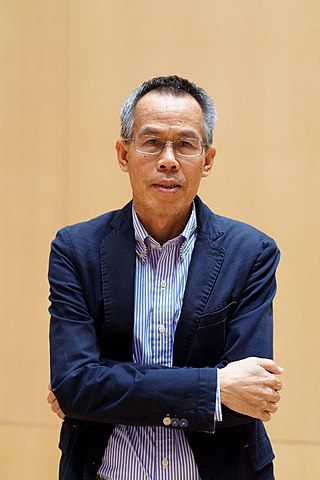
Thanik Lertcharnrit is a Thai Archeologist and Anthropologist and Professor at Silpakorn University. He specializes in southeast Asian archaeology and the public education and perception of archeology, with a focus on public Thai cultural heritage. Professor Lertcharnrit has made many contributions to the field of Cultural Resource Management (CRM), and acted as a pioneering figure and advocate for global public archaeology.











